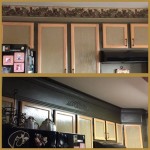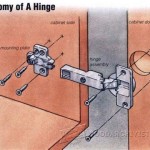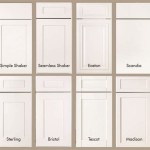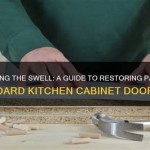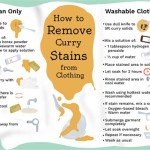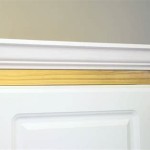Which Material Is Good for Your Kitchen? A Comprehensive Guide
The kitchen is often considered the heart of the home. It’s a space where meals are prepared, memories are made, and families gather. Consequently, selecting the right materials for a kitchen renovation or build is crucial. The choice of materials impacts not only the aesthetics and functionality of the space but also its durability, maintenance requirements, and overall value. This article will explore various kitchen materials, highlighting their strengths and weaknesses to assist in making informed decisions.
Selecting the ideal materials for a kitchen requires careful consideration of several factors. Budget constraints, intended usage, desired style, and maintenance preferences all play a critical role. Durable materials are essential for high-traffic areas such as countertops and flooring, while aesthetics might take precedence in features like backsplashes or cabinet finishes. Understanding the properties of different materials allows homeowners to balance practicality with visual appeal.
Countertop Materials: Durability, Aesthetics, and Cost
Countertops are arguably the most heavily used surface in any kitchen. They are subjected to chopping, slicing, spills, heat, and general wear and tear. Therefore, choosing a resilient and easy-to-maintain material is paramount. Several options are available, each with its unique advantages and disadvantages.
*Granite:
This natural stone remains a popular choice for its durability, heat resistance, and unique patterns. Each slab of granite possesses its own distinct veining and coloration, making it a visually appealing option. Granite is also resistant to scratches and stains when properly sealed. However, it is a porous material and requires regular sealing to prevent liquid absorption and potential staining. The cost of granite can vary depending on the rarity and complexity of the pattern, but it generally falls into the mid-to-high price range. *Quartz:
Engineered quartz countertops are composed of crushed quartz crystals mixed with resin and pigments. This manufacturing process results in a non-porous surface that is highly resistant to scratches, stains, and bacteria. Quartz countertops are available in a wide range of colors and patterns, including options that mimic natural stone. They are also relatively easy to maintain, requiring only soap and water for cleaning. The cost of quartz is typically comparable to granite, although some higher-end designs may be more expensive. *Marble:
Known for its luxurious appearance and cool surface, marble is a popular choice for baking enthusiasts. Its natural veining and soft colors can add elegance to any kitchen. However, marble is a softer and more porous stone than granite or quartz. It is susceptible to scratches, stains, and etching from acidic substances. Marble requires diligent sealing and care to maintain its appearance and prevent damage. Its cost can range from moderate to very high, depending on the type and quality of the stone. *Butcher Block:
Made from strips of wood bonded together, butcher block countertops offer a warm and natural aesthetic. They are durable and can be refinished if damaged. Butcher block is also a food-safe surface, making it suitable for direct food preparation. However, it requires regular oiling or sealing to prevent moisture absorption and cracking. Butcher block is also susceptible to scratches and stains. The cost of butcher block can vary depending on the type of wood used and the thickness of the countertop. *Laminate:
A more affordable option, laminate countertops consist of a plastic layer bonded to a particleboard or plywood core. Laminate is available in a vast array of colors and patterns, including options that mimic the look of natural stone or wood. It is relatively easy to clean and maintain. However, laminate is not as durable as other countertop materials. It is susceptible to scratches, stains, and heat damage. Laminate is a budget-friendly option, making it suitable for kitchens with limited funds. *Concrete:
Concrete countertops offer a modern and industrial aesthetic. They are highly durable and can be customized with various pigments and finishes. Concrete is also heat resistant and can be sealed to prevent staining. However, concrete is a porous material and requires regular sealing. It can also be prone to cracking, particularly if not properly installed. The cost of concrete countertops can vary depending on the complexity of the design and the level of customization.Cabinet Materials: Functionality, Style, and Cost
Kitchen cabinets are a major component of the kitchen's overall design and functionality. They provide storage space, contribute to the kitchen's aesthetic, and can influence the flow and organization of the room. Choosing the right cabinet materials requires careful consideration of both aesthetic preferences and practical needs.
*Solid Wood:
Solid wood cabinets are known for their durability, beauty, and timeless appeal. They can be stained, painted, or left natural to showcase the wood grain. Popular wood species for cabinets include maple, oak, cherry, and walnut. Solid wood cabinets are typically more expensive than other options but can last for many years with proper care. However, solid wood can expand and contract with changes in humidity, which can lead to warping or cracking. *Plywood:
Plywood is an engineered wood product made by gluing together thin layers of wood veneer. It is a stable and durable material that is less prone to warping or cracking than solid wood. Plywood is often used for cabinet boxes and shelving. It can be finished with paint, stain, or veneer. Plywood is generally less expensive than solid wood and offers a good balance of durability and affordability. *Medium-Density Fiberboard (MDF):
MDF is another engineered wood product made from wood fibers mixed with resin. It is a smooth and uniform material that is ideal for painting. MDF is also less expensive than solid wood or plywood. However, MDF is not as durable as other options and can be susceptible to water damage. It is best suited for cabinet doors and drawer fronts that will be painted rather than stained. *Particleboard:
Particleboard is a less expensive engineered wood product made from wood chips and resin. It is often used for cabinet boxes and shelving. Particleboard is not as strong or durable as plywood or MDF and is very susceptible to water damage. Cabinets made with particleboard are very cost effective, but typically do not last as long as cabinets made of plywood or solid wood. *Laminate Cabinets:
Laminate cabinets consist of a laminate layer bonded to a particleboard or MDF core. Laminate is available in a wide range of colors and patterns, including options that mimic the look of wood or other materials. Laminate cabinets are relatively inexpensive and easy to clean. However, laminate is not as durable as other cabinet materials and can be susceptible to scratches and chipping.Flooring Materials: Durability, Comfort, and Style
Kitchen flooring must withstand heavy foot traffic, spills, stains, and potential impacts from dropped items. The ideal kitchen flooring material should be durable, easy to clean, comfortable to stand on, and aesthetically pleasing.
*Tile:
Ceramic and porcelain tile are popular choices for kitchen flooring due to their durability, water resistance, and wide range of styles and colors. Tile is easy to clean and maintain, and it can last for many years. However, tile can be cold and hard underfoot, which may be uncomfortable for some. Tile is a great choice considering the longevity and maintenance required. *Hardwood:
Solid hardwood flooring offers a warm and inviting aesthetic. It is durable and can be refinished multiple times to extend its lifespan. However, hardwood is susceptible to water damage and scratches and requires regular maintenance. Engineered hardwood, which consists of a thin layer of hardwood veneer bonded to a plywood core, offers similar aesthetic benefits with improved water resistance and stability. *Vinyl:
Vinyl flooring is a resilient and affordable option that is available in a wide range of styles and patterns. Vinyl is water resistant, easy to clean, and relatively comfortable underfoot. Luxury vinyl plank (LVP) and luxury vinyl tile (LVT) are thicker and more durable options that mimic the look of wood or tile. *Laminate Flooring:
Laminate flooring is a less expensive alternative to hardwood. It consists of a photographic image of wood or other material bonded to a particleboard core. Laminate is easy to clean and maintain, but it is not as durable as hardwood or vinyl. *Concrete Flooring:
Polished concrete flooring offers a modern and industrial aesthetic. It is durable, easy to clean, and can be customized with various colors and finishes. Concrete can also be stained to mimic the look of other materials. However, concrete can be cold and hard underfoot.Choosing the right materials for a kitchen is a multifaceted process that requires careful consideration of various factors. By understanding the properties, advantages, and disadvantages of different materials, homeowners can make informed decisions that balance aesthetics, functionality, durability, and budget.

7 Best Kitchen Cabinet Materials To Protect You From Poor Quality Horrors

Our 17 Favorite Kitchen Countertop Materials Best Options
:max_bytes(150000):strip_icc()/top-kitchen-countertops-1977143-03-023194027a3749d28b2d06c727d6cfee.jpeg?strip=all)
10 Types Of Countertops For Your Kitchen

Our 17 Favorite Kitchen Countertop Materials Best Options

The Best Kitchen Cabinet Material And Why You Ll Love It Dailey Manufacturing Co

33 Best Kitchen Countertop Design Ideas Types Of Countertops

7 Best Kitchen Cabinet Materials To Protect You From Poor Quality Horrors

Selecting A Kitchen Countertop Material Noco Custom Homes

9 Best Kitchen Cabinet Materials To Choose From Iproperty Com My

Our 17 Favorite Kitchen Countertop Materials Best Options
Related Posts

